CONFEDERATION
DEFENSE FORCE
LAND
FORCES OF THE CONFEDERATION OF PALESTINE
INTRODUCTION
A small, multi-cultural nation surrounded by reactionary and/or
expansionist neighbors, the Confederation of Palestine has always relied
on a strong military to ensure national sovereignty. Though the use of a large conscript military
and the importation of modern military systems both have negative economic
implications for the nation, the continued threat from hostile neighbors
keeps military spending prominent in the national budget. As the 24th century begins, the Confederation
is debating whether the nation’s military has a role in the Kafer War.
INDEX
Order of Battle
Background
Recent Military History
Foreign Relations in 2300
Notable Units
Organization of Selected Units
Personnel
Rank Structure
Uniform
Confederation
of Palestine
Special Warfare Group
822nd Reconnaissance
Battalion
301st Parachute
Brigade
397th Reconnaissance
Brigade
398th Commando
Brigade
399th Naval
Commando Brigade
2nd Air Defense Brigade
100th Artillery Brigade
(Strategic)
Northern
Corps (Golan and
2nd Infantry Division
22nd Infantry
Brigade
24th Infantry
Brigade
26th Mechanized
Brigade
3rd Infantry Division
31st Infantry
Brigade
35th Mechanized
Brigade
37th Infantry
Brigade
4th Armored Division
41st ‘Nebarak’ Armored Brigade
43rd Armored
Brigade
44th ‘Golani’ Mechanized Brigade
6th Artillery Division
61st Artillery
Brigade
62nd Artillery
Brigade
Southern
Corps (Jordan and
1st “Omar ibn al-Khattaab” Armored Division
11th ‘
12th ‘Tariq’Armored Brigade
14th ‘Mechanized
Brigade
5th “King Abdullah I” Light
Armored Division
25th ‘Al-Basra’
Armored Brigade
40th Armored
Brigade
60th Armored
Brigade
7th Armored Division
71st ‘Barak’ Armored Brigade
77th ‘Kahalani’ Armored Brigade
79th ‘Givati’ Mechanized Brigade
10th ‘El Beqaa’ Artillery Division
101st Artillery
Brigade
102nd Artillery
Brigade
Reserve Corps
8th Reserve Infantry Division
(southern
11th Reserve Infantry Division
(northern
12th Reserve Infantry Division
(
324th Reserve Infantry Division (
325th Reserve Infantry Division
(Jordan)
201st Reserve Armored Brigade
(Lebanon/Israel)
202nd Reserve Armored Brigade (Jordan/Israel)
Notes:
(1) The 822nd Reconnaissance Battalion is technically subordinate to the 8th Reserve Infantry Division for security reasons, but it is actually under the control of the Special Warfare Group. Also note that the ORBAT does not include the National Police Forces; in wartime the NPFs have an internal security mission and come under control of the CDF.
(2) Recruiting areas for reserve units shown in parentheses. These areas reflect general territorial zones and do not reflect ethnic composition of units.
BACKGROUND
The
Confederation of Palestine (CP), originally referred to as the Levantine
Confederation (the current name was adopted by popular referendum in
2204 when a new constitution was framed), was created in 2051 from an
amalgamation of the states of Israel, Jordan, and Lebanon, after increasingly
close ties between all three nations as they each grappled with guerilla
war against ethnic Palestinians. The federal unification of these three nations
was part of a broader peace agreement, brokered with French assistance
to end the fighting in the region. In
exchange for laying down their arms, ethnic Palestinians were granted
a blanket amnesty for acts committed during the war, as well as a more
broadly significant Declaration of Equality. This
declaration granted Palestinians Confederation citizenship and re-established
free travel within all three nations (a right initially provided in
The settlement also abolished various discriminatory
laws and internal security measures all three nations had enacted against
ethnic Palestinians, as well as establishing autonomous control of various
areas then occupied predominantly by ethnic Palestinians (Gaza and the
West Bank, to include East Jerusalem, were the main areas, but numerous
municipalities in Lebanon and Jordan were also effected).
For their part, Palestinian leadership officially renounced violence
and armed insurrection against any of the three nations (besides resistance
to Israel, Palestinian uprisings had nearly toppled the Jordanian government
three times in the last hundred years, and had contributed to the destabilization
of Lebanon from which the nation was only now emerging after a century
of on-again, off-again civil war).
The
formation of the Confederation was generally a victory for political
moderates in all three nations and among the Palestinians, and it would
be another generation before lingering activity by extremists finally
ceased in the late 2070s (only to flare up again, briefly, in the first
decade of the 22nd century during an economic downturn).
The
unification was, in many ways, the nadir of Israeli and Jordanian fortunes,
after emerging from the Twilight War as close allies and extremely influential
power brokers in the
By
the end of the war, the two nations were participating in the occupation
of southern
The
Saudi War, however, did touch off a general Palestinian rising in both
On
its initial formation, the Confederation had no formal army of its own,
instead possessing a General Staff, which exercised command and control
over the individual national forces of each member state.
This organization worked relatively well in peacetime, but it
failed in many ways during its first test in combat, during Confederation
participation in the suppression of the Ramadan Revolt in Syria in 2071,
alongside the Syrian government and French garrison. The performance of Confederation forces was
very uneven, and there was widespread criticism about effectiveness
and casualties stemming from differing training levels, command and
control practices, and the like during the war.
Both the Israelis and Jordanians claimed, with varying degrees
of justification, to have borne an inordinate share of the fighting,
while Lebanese and the few ethnic Palestinian within the IDF force structure
put in very poor performances when they were placed in front-line service.
As a result of the war, an increasingly unified Confederation
Defense Force was formed, which performed better during the Second Syrian
War (2097) and during the Border Confrontation with
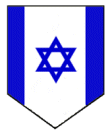
Women in the CDF
At the time of unification, the role of women in the military was a divisive issue. Israel was internationally known for applying conscription policies to women, as well as men, though this process was not as egalitarian in practice as in theory, while the Arab member states were less supportive of the notion. Jordan had some tradition of voluntary female military service and a vociferous proponent of military service for Arab women in the form of HRH Lt. Colonel Aisha Bint al-Hussein, a member of the royal family and a graduate of Sandhurst. Palestinian guerilla groups had relied extensively on female combatants during the war, though in the post-war era Palestinian writers and historians were quietly sweeping their participation under the rug in the historical narrative. Lebanon, unified for the first time in decades under a conservative multi-ethnic coalition government found the idea extremely divisive and best avoided.
The original result was that all member states were allowed to initially set their own policies. The IDF Women's Army Corps (CHEN) was retained in its pre-unification form, while Jordan and Palestine both experimented with professional and volunteer-conscript systems, both organized into similar Women's Army Corps. Lebanon remained exclusionary until 2083, when it established its own Women's Army Corps with relatively restrictive entry requirements. As the CDF became increasingly unified, a blanket policy on this issue was sought. The end result was a system of voluntary conscription for women, based on local laws (most notably a long-standing requirement for parental permission prior to conscription in Arab regions, in effect until 2204). Initially, and for most of the next century and a half, women in the Confederation military were assigned to the Confederation Women's Army Corps (modeled on IDF institutions), and generally restricted to administrative jobs and training cadres (again generally following IDF practices, though also in line with Arab member state's traditions). Originally, Women's Corps units were segregated both by religion and ethnicity, as most of the various polities within the Confederation were extremely sensitive on the issue.
Sensitivity
faded to a degree over time, and the Women's Army Corps itself was eliminated
in 2204. Women remain ineligible for potentially front-line combat roles
and are also less officially shunted away from physically demanding,
'masculine' jobs without direct combat potential (i.e. mechanics). Beyond
that, there is a sense in many quarters that predominantly Arab units
are less receptive to female soldiers, however, and it is not uncommon
for young Arab women contemplating National Service to establish actual
or fictional residences in predominantly Jewish areas to secure postings
to 'better' units. The CDF is currently experimenting with allowing
women to serve in artillery units (in fire direction centers, specifically),
and this is seen by many as a potential beginning to improved status
and opportunity within the military.
The CDF circa 2300
Comparisons are often drawn between the Confederation and the
CDF and
However, one should take care not to draw the analogy too far.
While the Confederation military has a good reputation (owing
in no small part to its deliberate programs to nurture and maintain
a solid, professional NCO corps), the quality differential between the
CDF and its opponents is much smaller than that seen during the height
of the Arab-Israeli confrontations in the 20th century. During the Age of Recovery, much ink was spilled
and bureaucratic battles fought to create an even level of quality among
CDF units, and the process not only elevated the sub par, but it also
leveled off the top end formations as well.
The current exception to this is the Special Warfare Group, whose
component units receive funding and training adequate to allow them
to stand alongside their international counterparts in more affluent
nations (although they are often held to do so based more on the determination,
ingenuity and sheer determination of their soldiers rather than 2nd
Tier quality training or equipment).
Likewise, the strategic situation of the Confederation is rather
different from that of
The
Confederation Defense Force has participated in five regional conflicts
within the last fifty years.
The
Kurdish-Iraqi War (2260): After war erupted between
The
Kurdish-Armenian War (2267-2270): Armenian cross-border pursuit
of Turkish separatist guerillas into Kurdish territory erupted into
a limited border war in 2267, again prompting the Confederation to intervene
alongside
Eritrean-Ethiopian
War (2273): Despite
French and UAR pressures to resolve differences non-violently, war broke
out between Eritrea and Ethiopia concerning existing border disputes
exacerbated by mineral finds in the disputed area (which, ultimately
turned out to be largely overstated).
The war, which quickly began to spill armed groups over into
3rd
Aegean War (2274): Official Palestinian participation in the
latest Greco-Turkish conflict was limited to the deployment of the 301st
and 398th Brigades to
3rd
Arabian War (2280-1):
Foreign
Relations in 2300
The
The
Confederation and Space
American
and
NOTABLE
UNITS
2nd
Air Defense Brigade:
This brigade (HQ in
5th
Light Armored Division: This division headquartered in Amman and mostly
drawing its recruits from Jordan, is unique in the CDF as the organization's
only hover-mobile major formation. Equipped with British Cavalier hover
tanks and French AVCI-3 personnel carriers, the division's three subordinate
armored brigades are the main delaying force (along with the air force)
for any opponent approaching the Confederation's population centers
from across the southern or eastern deserts. The three brigades undertake
rotating six-month peacetime deployments to installations along the
border, which remains a hardship posting. The division has frequently
exchanged fire with their Arabian counterparts in the southern desert
since the withdrawal of stabilizing forces in 2286, and a bloody rivalry
has grown up between the 5th Light Armored Division and the Arabian
10th (Baluchi) Division, the elite of the Arabian border security forces.
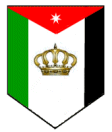
301st
Parachute Brigade:
Tracing its existence, and much of its esprit de corps, back to the
Israeli airborne forces of the 20th century, the 301st
Parachute Brigade is the Confederation’s primary expeditionary force.
Though subordinate to the Special Warfare Group, the Brigade
is configured as a conventional light infantry formation and is capable
of deploying by airborne or airmobile means, as necessary. Limited airlift and the regional air defense
environment are such that the CDF generally considers the wartime role
of the brigade in defense of the Confederation to be generating company
and battalion-sized strike forces for raids against high priority targets
in the enemy rear, alongside the 398th Commando Brigade. The more general use of the 301st,
however, is in international deployments, where the brigade has distinguished
itself in conflicts and peacekeeping missions throughout the
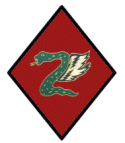
397th
Reconnaissance Brigade:
Tracing its history back to the first joint
Israeli-Jordanian military unit, the 55th Reconnaissance Battalion,
a light motorized unit tasked with maintaining surveillance along pipelines
and road from south-eastern Iraq to Israel and Jordan during the post-Twilight
era, the 397th Brigade maintains that tradition to this day. It is primarily
a long-range reconnaissance unit, trained to function as both an airmobile
and motorized force, as necessary. Their wartime mission would be to
slip across national frontiers (either by self-deploying or by covert
aerial insertion) and disrupt enemy supply and communications by identifying
targets for Air Force attacks, as well as direct action against high
value targets in the enemy rear area. The brigade consists of three
small, subordinate battalions, two equipped with light unarmored hovercraft
for mobility, the third a light-infantry formation, plus supporting
assets. Combat missions into Arabia are rumored to be occasional taskings,
designating targets for CDF artillery raids.
398th
Commando Brigade: A Middle-Eastern style commando organization,
the 398th is organized as a conventional motorized infantry brigade,
but trained to extremely high standards and intended mainly to serve
as the CDF's elite fire brigade in restricted or built up terrain, both
on the offense and defense. The brigade trains for airmobile deployment
of assets, though primary mobility is via its own vehicles, and there
is a great deal of rivalry between the 301st and 398th Brigades. Though
intended primarily for built up areas, in the last decade the brigade
has also detached company sized elements for cross-border raids into
Arabia to eliminate point targets like Border Guard posts and artillery
observation posts.
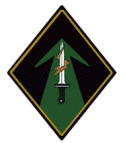
399th
Naval Commando Brigade:
This unit is technically a part of the Confederation Navy, and is tailored
for littoral special operations, though it also has a secondary wartime
mission of land operations, especially in the Lebanese and
822nd Reconnaissance Battalion: Technically a part of the 8th Reserve Infantry Division, the 822nd Battalion is actually the elite of the CDF's special operations forces, being tasked with peacetime "black ops" in support of the Confederation Intelligence Service, counter-terrorism missions, and discrete punitive operations against "point targets" in Arabia, Syria, and elsewhere. The unit is also rumored to be active supporting dissident Jordanian and Jewish groups in occupied Aqaba and Eilat. The unit trains closely with the Confederation Intelligence Service for the infiltration of operatives into hostile nations for various operations. Planned wartime missions, beyond strategic reconnaissance and assassination of key enemy leaders, are rumored to include "Jericho Falls" missions (the term is unofficial, taken from a popular work of fiction of the same name about the 3rd Arabian War, first published in 2294), involving the infiltration of small, man-portable nuclear weapons into enemy territory, as well as aiding the CIS in identifying and eliminating similar enemy special operations units. The 822nd is small (estimated strength of 250 or less, with perhaps two-thirds of that being operational personnel), and draws its members from both the Special Warfare Group and the CIS. The unit has no distinctive insignia (members wear the 8th Division's "Cedars of Lebanon" shoulder patch) and are prohibited from wearing decorations and qualification badges when in uniform (rarely worn in any case) to avoid calling attention to themselves. Operations are a state secret, though rumors abound of actions nominally attributed to various separatist and guerilla throughout the Middle East and eastern Mediterranean being the handiwork of the Palestinian special forces.
Below:
8th Reserve Infantry Division patch, also worn by the 822nd Reconnaissance
Battalion
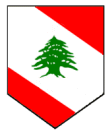
ORGANIZATION
OF SELECTED UNITS
The following outlines typical CDF organization, though it should be mentioned that operationally task-organizing units for specific missions is quite likely. Combat service support assets are omitted from the descriptions below for brevity’s sake.
Armored
Division
The CDF has three armored divisions, each made up of two armored brigades, a mechanized infantry brigade, plus supporting divisional troops including a heavy rocket artillery battalion (eighteen Brazilian MD-32 long range MLRs mounted on Type 119 IFV hulls), an engineer battalion, an air defense battalion and a reconnaissance battalion. There are no divisional aviation assets (besides reconnaissance UAVs), as all aircraft and attack UCAVs are under the control of the Confederation Air Force.
Armored divisions are built around the modern and capable Mk.6 tracked multi-purpose armored fighting vehicle, a Turkish design capable of various modular configurations, including a main battle tank, infantry combat vehicle, etc. The divisions are optimized to operate in the rough and/or urbanized terrain that characterizes most of the Confederation.
Armored Brigade: Each armored brigade consists of two armored battalions, an artillery battalion equipped with eighteen Manchurian Type 200 110mm self-propelled electromagnetic howitzers, and a brigade reconnaissance company equipped with eight Mk.6 Reconnaissance and Surveillance Vehicles and eight Mk.6 Infantry Combat Vehicles. Each armor battalion has a headquarters company, to include a platoon of six self-propelled 105mm mortars, and three tank companies, each of sixteen tanks.
The tank company includes the commander’s Mk. 6 command vehicle and three tank platoons, each of five Mk.6s split between three MBTs (armed with vertical launch Type 93 missiles) and two Infantry Combat Vehicles, each carrying six infantrymen, for a total of twelve infantrymen per platoon. These troops are generally employed as close-security for the platoon’s vehicles during operations in restricted terrain, though they may also be massed into a 36 man rifle platoon as needed. Typically, one or more of the company’s platoon leaders has attended CDF’s Armored Infantry Leaders Course (AILC), qualifying him to serve as an infantry platoon leader when massed dismounted operations are employed.
Each twelve man squad consists of a squad leader (usually a sergeant, though sometimes a corporal), commanding one four man fire team, with two assistant squad leaders (usually corporals), each leading two more four man teams. Each four man team is equipped with a Bekaa-LMG light machinegun, a Golan 30mm grenade launcher, and two Bekaa-AR assault rifles. The squad also has access to a single Luce-5 laser rifle, for sharp-shooting and Cobra light ATGWs, for missions requiring either capability.
Typically
each squad will have at least one soldier per fire team who has received
special advanced training on the Cobra missile above the basic familiarization
all soldiers receive. Another soldier per fire team will have some
advanced training on demolitions, especially hasty breaching of simple
minefields and use of explosives in urban combat. Additionally, each squad typically contains
at least one soldier who has received advanced training in communications
systems to serve as a signaler, another with training to serve as a
first line medic, and at least one who has been trained to use the Luce-5
laser rifle as a designated marksman.
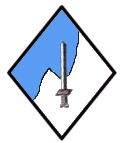
Mechanized Brigade: The mechanized brigade is larger than the armored brigade, and is intended for more deliberate, less maneuver oriented operations, most especially in urban areas. Like the armored brigade it includes a battalion of 18 EM howitzers and a reconnaissance company of eight Mk.6 RSVs and eight Mk.6 ICVs. ‘Teeth’ elements, however, consist of three Mechanized Battalions.
Each Mechanized Battalion consists of a headquarters company (again including a six tube mortar platoon), a tank company of ten Mk.6 MBTs, and three rifle companies equipped with lighter Manchurian designed Type 119 ‘Targan’ infantry fighting vehicles.
Each rifle company consists of a headquarters section (mounted on three Type 119s), a weapons platoon, and three rifle platoons. The weapons platoon has two Type 119s modified to carry 105mm auto-mortars and two Type 129 tank destroyers armed with Type 93 ATGW. Total AFV strength amounts to nineteen Type 119s.
Rifle platoons have four vehicles each, carrying three eight-man rifle squads, plus a two man medical team, a two man forward observer team, and a four man sapper team. Each squad is equipped with two Bekaa-LMGs, two Golan semi-auto grenade launchers, and four Bekaa-AR assault rifles. Cobra light ATGW and a Luce-5 laser rifle are carried on each squad vehicle for use as needed. The sappers, FO team, and medics all carry Bekaa-AR rifles.
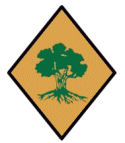
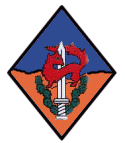
Reconnaissance Battalion: This organization provides a range of reconnaissance, surveillance, and target acquisition assets for the Armored Division. Main components consist of two Aerial Reconnaissance Companies, two Reconnaissance Companies, and one Surveillance Company.
The Aerial Reconnaissance Companies each operate ten Phantom medium-range UAVs, capable of providing an aerial reconnaissance footprint covering an entire divisional front and extending up to 100 km forward of friendly troops (though this is highly dependent on the air defense environment). The Phantom is an unarmed system that features a current generation Brazilian sensor array of formidable abilities.
The Reconnaissance Companies each consist of twelve Mk.6 Reconnaissance and Surveillance Vehicles, plus two Mk.6 Command Post Vehicles. Unlike the brigade reconnaissance companies there are no organic infantry carriers, as the division Recon Companies do not have a close reconnaissance role. They primarily operate as far forward of the division as possible and feed targeting data back to division and higher strike systems. On the defensive, this forward operating role would consist of occupying hide positions and then going into a stay-behind mission.
The Surveillance Company is a light infantry organization, again configured for either the stay-behind role or forward insertion by CAF assets. The company is organized into a headquarters (seventeen men) plus ten four-man Reconnaissance Teams, each consisting of a Team Leader (usually a sergeant), a Scout/Observer (usually a private or PFC) and two Communications Technicians (the senior usually a corporal, the junior a PVT or PFC). Armament consists of one Luce-5 laser rifle (usually carried by the team leader) and three Bekaa-AR rifles, with the Team Leader and senior Commo Tech both also being issued suppressed Falcon automatic pistols. Communications equipment and optics, the primary weapons of these units, are both first rate, the former being encrypted French systems and the latter being top-end British multi-spectral man-portable long-range systems.
Light
Armored Division
The
CDF has one light armored division, the Amman-based 5th Light
Armored Division, a predominantly Jordanian unit (meaning, of course,
that it recruits in the area of
Primary subunits of the division are three armored brigades, each consisting of two armored battalions, a mechanized infantry battalion, and an artillery battalion, plus supporting assets, including an air defense company, an engineer company, a ground reconnaissance company (unarmored hovercraft) and an aerial reconnaissance company (UAVs).
Each armored battalion consists of a headquarters company (including a six tube self-propelled mortar platoon using modified AVCI-3s) and four tank companies, each of ten tanks. Each company is further divided into a headquarters tank and three three-tank platoons.
The mechanized battalion consists of a headquarters company (again with a six tube mortar platoon) and four rifle companies. Each rifle company has three rifle platoons and an anti-armor platoon equipped with four AVCI-3s modified to carry vertical launch Type 93 ATGWs. Rifle platoons are organized similarly to those described in the Armored Division’s Mechanized Brigade above, except that the Sapper team is replaced by a four-man anti-armor team, equipped with two Blindicide-9 ATGW launchers (5th Light Armored Division is the first unit in the CDF equipped with the new missile).
Infantry
Division
The CDF has two active and five reserve infantry division. These organizations are intended primarily for defensive operations, especially in rough or urban terrain, to free up the armored divisions for offensive or counter-offensive operations.
Each of the two active infantry divisions consists of one mechanized brigade identical to the armored division mechanized brigade described above and two motorized infantry brigades. Divisional troops are identical to those found in the armored divisions, though the Reconnaissance Battalion is somewhat different in composition.
Below: 2nd Infantry Division patch
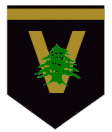
Infantry Brigade: The infantry brigade consists of three motorized infantry battalions, a battalion of eighteen Type 200 EM howitzers, a tank company with ten Mk.6 MBTs, and a reconnaissance company. Each motorized infantry battalion has a headquarters company, a weapons company, a mechanized company, and two rifle companies.
The weapons company is mounted on a mix of soft-skin vehicles and Type 119 IFVs and derivatives. It consists of a mortar platoon (six 105mm auto-mortar carriers), an anti-armor platoon (eight Type 129 tank destroyers), a combat walker platoon with twelve Manchurian Type 9-3 combat walkers, and a sniper platoon. Both the combat walker platoon and sniper platoon are reliant on soft-skinned trucks and range-trucks for transportation.
The sniper platoon consists of nineteen personnel, including a platoon leader, platoon sergeant, and communications specialist, plus eight two-man sniper teams. The platoon is intended to provide reconnaissance, harassing fire, and target interdiction for the battalion, and so members of the platoon require higher levels of field craft than are expected in line unit sharpshooters armed with the Luce-5. Armament for the platoon consists of eight Luce-5 laser rifles and eight FTE-10 gauss sniper rifles, plus eleven Bekaa-AR assault rifles for team spotters and the command group. Depending on the mission, a given sniper team will employ either the laser or the gauss rifle – which ever weapon is not needed staying in the platoon’s supply truck.
The mechanized company is equipped with Type 119 IFVs and organized like the mechanized company described above in the Mechanized Brigade section, except that the weapons platoon is omitted. CDF doctrine regards these units as the infantry battalion commander’s force of choice for main offensive or defensive efforts, but oftentimes the company’s infantry are dismounted and the carriers are held as a battalion reserve or direct-fire support asset to reinforce anywhere in the battalion sector, owing to the punch of their plasma cannons.
The rifle companies consist of a headquarters section, a weapons platoon, and three rifle platoons, all provided with cargo or range trucks for mobility. Rifle platoons each break down into three twelve-man squads (organized and equipped like armored battalion infantry squads described above), plus a platoon leader, platoon sergeant, platoon medic, and signaler.
The weapons platoon consists of a Light Support Squad, a Close Support Squad, an Anti-Armor Squad, and a Sapper Squad. The platoon is provided with range trucks, rather than cargo models, primarily to allow maximum flexibility and maneuverability of key weapons system for the company. In static defensive operations, CDF doctrine calls for the vehicles to be massed in the rear for use moving (otherwise cargo truck mobile) company and battalion reserves forward, and also to assist the battalion’s ambulance section in casualty evacuation.
The Light Support Squad is equipped with three range trucks armed with both a DunArmCo Mini-12 heavy machinegun and a local Hadera 30mm automatic grenade launcher. Each range truck includes a driver, a vehicle commander, a gunner, and an assistant gunner as well as the two weapons systems. The squad can either be employed mounting the heavy machineguns or AGLs on gun-shield equipped ring-mounts, or either or both weapons can be dismounted for use on tripods (the four man crew allows each vehicle to put one two man heavy weapons team on the ground and another on the vehicle, as well).
The Close Support Squad is provided with two range trucks for its ten personnel, which consists of two vehicle drivers and four two-man plasma gun teams, armed with a Quinn-Darlan Mk.2-A2 PGMP and a Bekaa-AR.
The Anti-Armor Squad likewise has two range-trucks, each also provided with a five man crew, and, like the Close Support Squad, consisting of two two-man teams plus a driver per vehicle. In this case, each team is equipped with a launcher for Blindicide-3 ATGWs, with each range-truck carrying a total of forty of the lightweight missiles. All personnel are armed with Bekaa-AR rifles along with the missile launchers. The improved Blindicide-9 ATGW has been procured by the CDF and is slowly entering service, but most units are still equipped with the earlier missile, particularly with the Kafer War slowing French export orders.
The Sapper Squad has a last two range-trucks, each with a trailer for demolitions and other equipment, and consists of two drivers plus a total of eight combat engineers. The squad is primarily responsible for mining operations and the use of explosives to improve fighting positions, especially urban ones (i.e. mouse-holing walls, etc.). Sapper squad personnel, along with battalion snipers, tend to be among the best soldiers in any given battalion.
Reserve Infantry Divisions: CDF reserve infantry divisions differ from the two active duty divisions in that they are composed of three Infantry Brigades, and lack a Mechanized Brigade. Instead, they have an independent tank battalion as a divisional asset, equipped with thirty tanks divided up into three companies of ten. This battalion can either be parceled out to augment the brigade tank companies, or retained as an offensive/counter-offensive force. Also, the reserve division tank battalion and brigade tank companies are not issued the Mk.6 tank, but rather use the older Turkish Mk.5.
Below: 324th Reserve Infantry Division patch
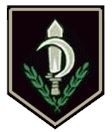
301st
Parachute Brigade
The
301st Parachute Brigade is a very lightly equipped intervention
force, built around three light infantry battalions supported by a small
artillery battalion (equipped with twelve Brazilian MD-100 howitzers),
as well as aerial reconnaissance (UAV equipped), pathfinder, engineer,
air defense, and anti-armor companies.
Each
battalion consists of a Headquarters Company, including a sensor-based
Reconnaissance Platoon (equipped with a mix of light UAVs
and remote sensor systems), and a mortar platoon with four towed 105mm
mortars. Rifle companies are configured like the Infantry
Brigade rifle company described above, without motorized transport,
and with a more austere weapons platoon equipped with four four-man
French 80mm mortars, four two-man Blindicide-9 teams, and four
two-man sniper teams armed with Luce-5 laser rifles.
Note
that the 399th Naval Commando Brigade’s 1st Battalion
is organized identically to one of the 301st’s infantry battalions,
though the unit typically operates as more frequently as company or
platoon sized detachments than as a full battalion.
397th
Reconnaissance Brigade
The
397th Reconnaissance Brigade controls various long-range
reconnaissance assets which, in time of war, would be involved in target
detection and damage assessment in the deep battle beyond 90 kilometers
forward of friendly troops. Besides the high-profile ‘desert rats’ and LRRP
units, the brigade also controls a long-range UAV aerial reconnaissance
battalion and a small (100 man) military intelligence battalion equipped
for signal/electronic reconnaissance and decryption.
Primary
elements of the brigade consist of two motorized Reconnaissance Battalions
(1st and 2nd Battalions) and one light Reconnaissance
Battalion (3rd). The two motorized battalions consist of an austere
Headquarters Company and three Reconnaissance Companies (each commanded
by a major, rather than a captain).
Reconnaissance Companies have an equally austere company headquarters
(like the battalion HQ company, most headquarters
personnel are communication specialists) and four Reconnaissance Platoons. Each reconnaissance platoon, led by a captain
or senior lieutenant, consists of sixteen men, split into four teams,
each operating from a highly modified hover-rover well equipped with
advanced sensor systems, communications gear, and defensive armament. The 3rd Reconnaissance Battalion
is identically organized, except that its Reconnaissance Companies have
no organic vehicles and are designed for infiltration or stay-behind
missions in rough terrain or urban areas.
822nd
Reconnaissance Battalion
The
precise composition of the 822nd Reconnaissance Battalion
is a closely guarded state secret, but it is believe to consist of approximately
250 personnel, with approximately 160 of those being “operators,” the
remainder being assigned to various support roles (which are rumored
to include some of the finest computer intrusion specialists in the
Confederation). Unlike the remainder of the CDF, it is purported
that the 822nd has no restrictions on women serving in combatant
roles and some have suggested that as much as 40% of the unit’s support
and operational personnel are women.
The
basic building block for operations is the four-person cell, of which
the battalion is believed to have approximately forty (with perhaps
10-15 being non-operational at any given time for various reasons).
Within the cell, some degree of specialization exists in relevant
skills (computer intrusion, weapons handling, demolitions, etc.), but
any one member of the battalion is expected, when fully trained, to
possess the necessary skill set for independent operations, should the
situation require such, and it is believed to be quite rare for more
than two cells to be assigned to an operation.
It is believed that different cells also have certain specializations
as well, such as surveillance, close-quarters direct action, more impersonal
means of eliminating targets, etc.
PERSONNEL
Enlisted: The CDF is largely a conscript force
with a professional cadre of officers and mid to upper level NCOs. The current personnel system has evolved greatly
since the CDF was originally formed as a controlling headquarters for
the militaries of
In
theory, all men and women in the Confederation are subject to National
Service conscription at the age of 18, with an obligation for three
years of service. Actual manpower requirements for the military
are such, however, that actual active duty military service is not universal
(especially in heavily populated urban recruiting districts), and is
generally voluntary. Those eighteen
year olds not selected for active military service either fulfill their
National Service commitments by serving in the military reserves, or
in various civil service postings.
Personnel
going into the active components of the military undergo a roughly six
month basic and individual training cycles, the precise length of which
varies by specialty (in the case of some technical jobs, basic skills
training may be longer). Personnel are formed into platoons and companies
from the start of their basic training, so much of their initial six
month training period, loosely analogous to most military basic and
individual training regimes, is actually spent learning platoon and
company level operations, as well as individual skills.
Given companies will generally remain together for at least 24
months of their National Service commitment.
After completion of basic training, formed units are inducted
into their parent brigades and enter into a series of six month training
cycles.
At
the end of the first 24 months of service, those personnel who have
demonstrated leadership potential (and usually already been advanced
to lance corporal or corporal already) are sent to the CDF’s
Basic NCO Course where, upon completion, they will be promoted to Sergeant
and posted back to their units, the best being attached to an incoming
squads or crew of new conscripts, the remainder paired up with a unit
with some experience already. Other
personnel are sent to various specialist schools and posted to key brigade
units, such as Reconnaissance Companies, Weapons Companies, and the
like. These units, as a consequence, are among the
most proficient sectors of the CDF military.
At
the end of the first 24 months of service, personnel are also given
the opportunity to apply for cross-posting to the various units in the
CDF Special Warfare Group (with the exception of the 822nd
Reconnaissance Battalion, which does not openly recruit).
Personnel wishing to do so must agree to extend their conscription
period to an additional twelve months, and must then pass first the
Special Warfare Group Combat Skills Evaluation and additional selection
courses for their specific unit they wish to enter.
Most personnel in the Group functioning as private soldiers actually
wear lance corporal or corporal rank, but the CDF is generally informal
in its use of rank.
When
an individual’s National Service period is at its end, some will be
given the opportunity to remain on active duty (mostly those who were
promoted to sergeant already) and enter the ranks of the professional
NCO corps. Other personnel are offered the chance to transition
to reserve units on a voluntary basis.
The 822nd Battalion does not conduct announced or formalized
recruiting programs. Instead, the unit seeks out promising personnel,
usually from the SWG and Confederation Intelligence Service. However,
the 822nd occasionally recruits more widely, particularly if the unit
needs someone with specialized technical skills, language abilities,
or area knowledge. Training, like recruitment, is informal though
exceedingly rigorous.
Non-Commissioned Officers: Conscripts who demonstrate
leadership potential can rise as high as the rank of Corporal during
their National Service commitment. Above
the rank of Sergeant, the CDF NCO corps are
strictly professional contract soldiers.
Selection for advancement through the NCO ranks is typically
rigorous and includes infantry-focused training and evaluation courses
for all branches of service, as well as branch-specific requirements. The CDF has traditionally outperformed their
regional enemies based in no small part on the professionalism and skill
of its NCO corps, and every effort is made during peacetime to ensure
that non-commissioned officers are capable and well trained leaders.
Typically, a combat arms NCO in the CDF will be given at least
one opportunity to attend at least one foreign training course in
Officers: At the end of the two year conscription
period, a select group of soldiers with high test scores, good service
records, and recognized leadership potential are offered state-subsidized
college educations with simultaneous enrollment in an officer training
cadre unit which has a training schedule somewhat more rigorous than
a standard reserve unit in lieu of attending the Basic NCO Course. The idea was loosely copied from American and
British officer training systems and was a successful attempt to improve
the level of education among CDF officers, who for some time continued
the Israeli tradition of being highly capable soldiers but less than
well rounded, educationally speaking.
A very small number of potential officer cadets (typically
45 each year) are given the opportunity to attend French, British, or
Turkish national military academies under agreements worked out with
the governments of those nations. Similar
agreements allow CDF officers to subsequently attend a range of professional
and staff colleges in those nations as well.
Reservists who are university students, or who otherwise meet
CDF educational requirements, may enroll in officer training cadre units
after four years of satisfactory service and attainment of non-commissioned
officer rank. They receive commissions in reserve units.
RANK
STRUCTURE
CDF rank structure reflects both American (via the Israeli Defense Force) and British (via the Royal Jordanian Army) influence, with the end result being something of a compromise between the two systems. The chart below shows the rank structure as well as the units typically led/commanded by persons holding a given rank. The levels of responsibility listed should be taken as representative, but not absolute, for the CDF -- it is common for capable NCOs and officers to fill positions a level above their current rank, for instance.
Two-year conscripts (and reservists during their first three
years of service) may be promoted up to the rank of Corporal. Officer ranks correspond, in responsibility,
to American and European equivalents. The senior-most Lieutenant
General in the CDF, serves as Chief of Staff
(typically a stepping stone to a subsequent and prominent political
career). Current chief of staff is Lt. General Binyamin Mahoudi,
formerly commander of the 5th Light Armored Division. His five
year tenure ends in 2304.
|
CDF Rank Structure |
|||
|
ENLISTED/NCO |
LEADS |
COMMISSIONED |
LEADS |
|
Private
(E) |
-- |
Second
Lieutenant |
Platoon |
|
Private
First Class (E) |
-- |
Lieutenant |
Company
XO or Commander |
|
Lance
Corporal |
Crew-Served
Weapons Team |
Captain |
Company |
|
Corporal |
Fire
Team |
Major |
Staff
Officer |
|
Sergeant |
Squad
or AFV |
Lieutenant
Colonel |
Battalion |
|
Staff
Sergeant |
Platoon
Sergeant |
Colonel |
Brigade |
|
Sergeant
Major (1) |
Company
SM |
Brigadier
General |
Separate Brigade |
|
Sergeant
Major (2) |
Battalion
SM |
Major
General |
Division |
|
Senior
Sergeant Major (1) |
Brigade,
Division SM |
Lieutenant
General |
Corps |
|
Senior Sergeant Major (2) |
Corps and other Major Comamnd SM |
General |
Chief of Staff |
NOTES: E = Enlisted ranks, all ranks above this considered
non-commissioned officers. The
Sergeant Major and Senior Sergeant Major ranks both include a junior
and senior pay grade (1 and 2), with the latter outranking the former.
UNIFORMS
CDF field uniforms consist of trousers, shirt, and jacket in a two-color khaki/sage camouflage pattern. Subdued versions of rank are worn on epaulets. Vehicle crewmen are issued fire-retardant coveralls in the same camouflage scheme. For combat operations, infantry and other ground combatants add inertial body armor vests with rigid trauma plates (AV 1.5 for front and back of torso) and high-threat helmets. Vehicle crews use fire-retardant non-rigid body armor suits, augmented with lighter inertial body armor vests (combined AV 1), with crewman helmets that provide standard helmet protection. Special Warfare Group personnel typically wear Brazilian-manufactured polychromic camouflage uniforms and thermal masking undersuits during field operations (though some units also operate in civilian clothing, foreign uniforms, etc., as dictated by the situation).
Dress uniforms and daily service uniforms are khaki, with the same placement of rank and patches. Medals and decorations (which the CDF only awards in small numbers in any event), as well as qualification badges are only worn with dress uniforms.
Headgear
in all three uniforms consists of berets, in various colors reflecting
unit of assignment, worn with a branch or corps cap badge, supplemented
with brimmed boonie-type caps during field service when helmets are
not worn. The CDF abolished nation-specific beret or beret flashes and
cap badges and standardized headgear for all four nations in 2181.
28/12/03
Copyright, James Boschma, 2003
